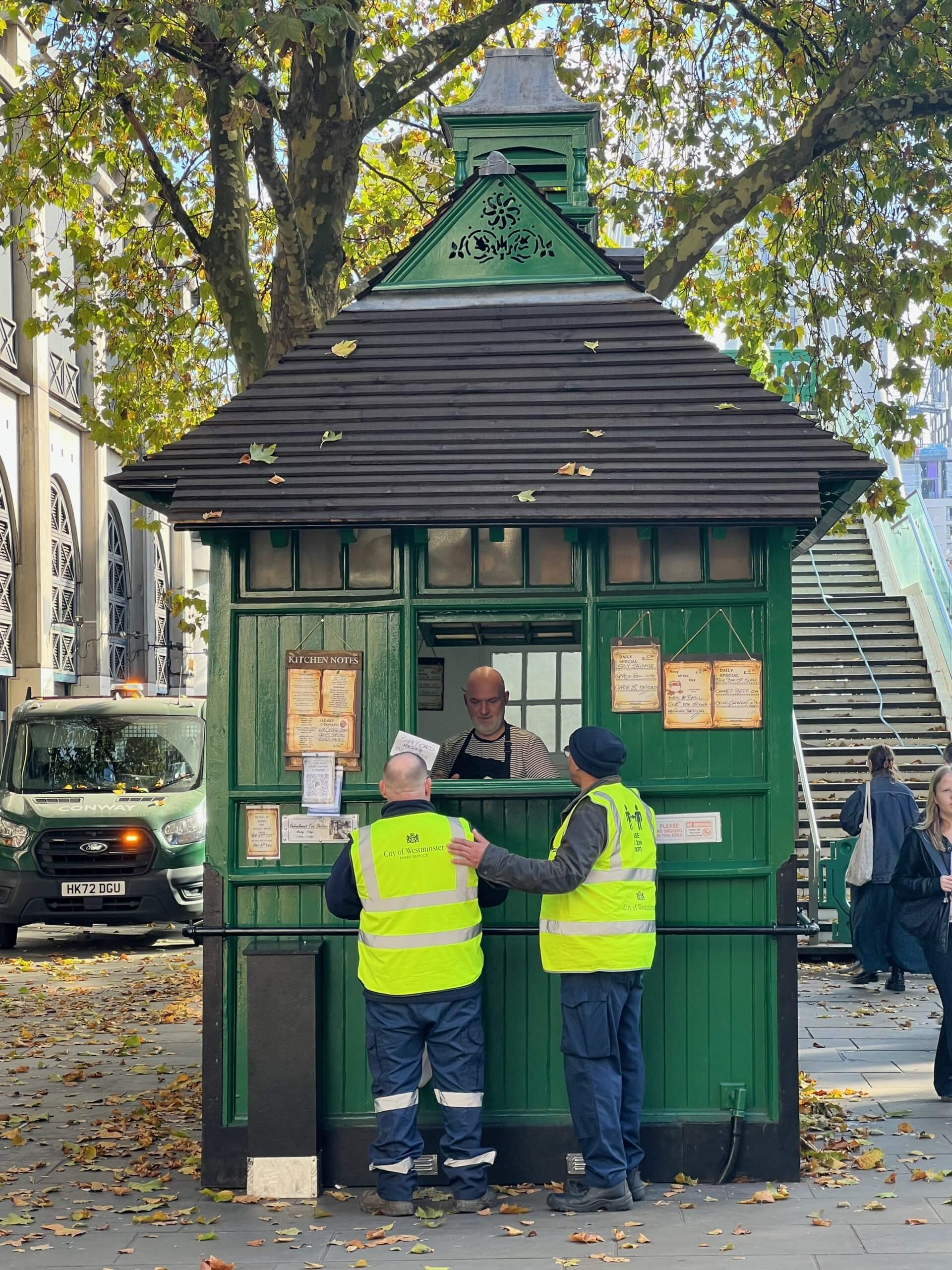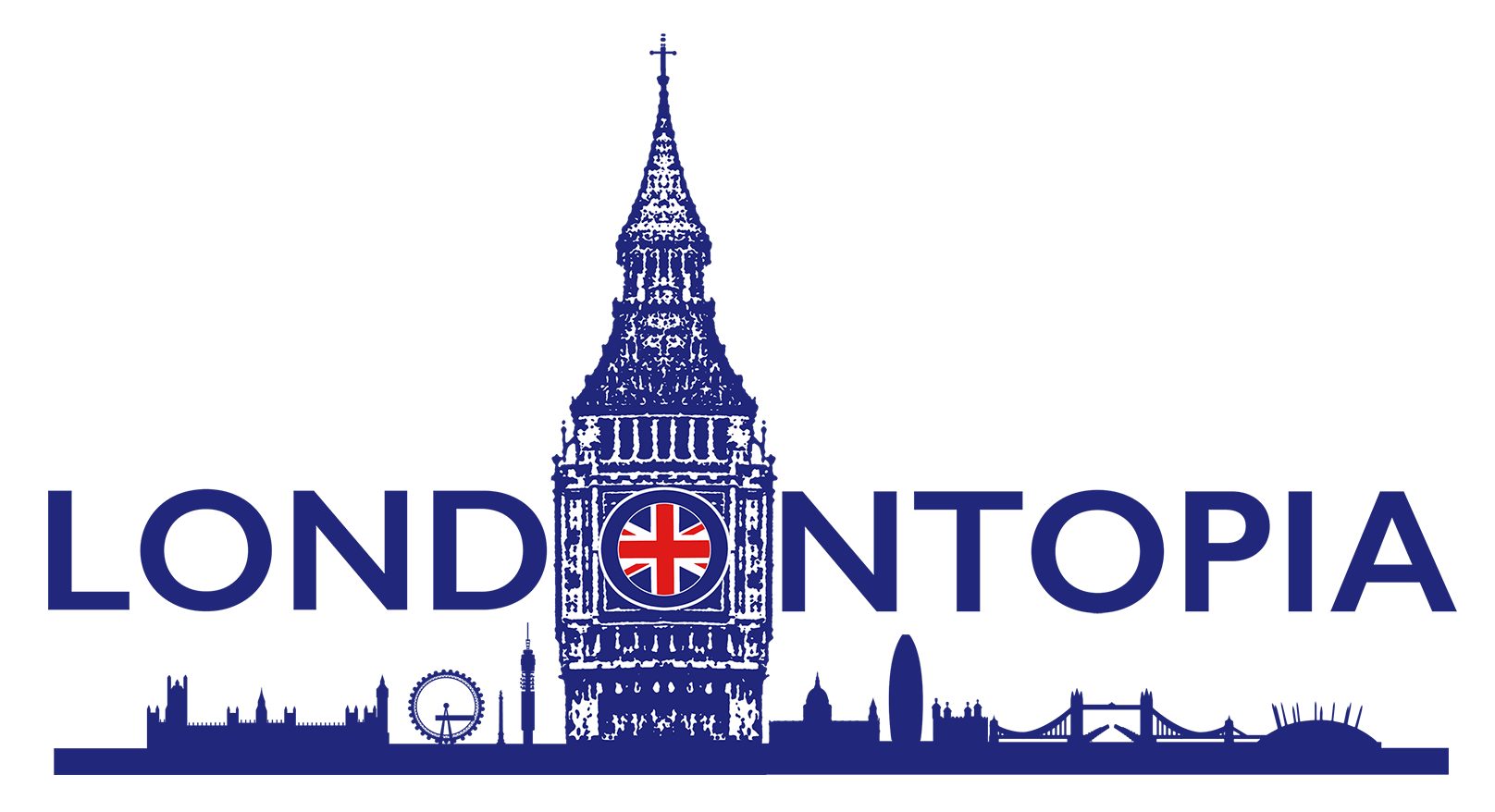Editor’s Note: This is the start of a new series of articles where we will explore iconic London places and attractions. We hope you like it!
In the bustling streets of London, amid the gleaming skyscrapers and historic monuments, stand small green wooden structures that many tourists walk past without a second glance. These unassuming huts represent a fascinating piece of London history and offer budget-conscious travelers an authentic taste of London culture and cuisine.
A Victorian Solution
The story of London’s green cabmen’s shelters begins in the bitter winter of 1875. Captain George Armstrong, editor of The Globe newspaper, sent his servant out in a blizzard to find a cab. The servant returned an hour later, soaking wet and empty-handed—all the cab drivers were warming themselves in nearby pubs, many too intoxicated to drive safely.
This experience inspired Armstrong to establish the Cabmen’s Shelter Fund with the help of the Earl of Shaftesbury and other philanthropists. Their mission was to provide cab drivers with places to rest, eat, and stay warm without resorting to pubs. Between 1875 and 1950, 47 of these shelters were built across London at a cost of £200 each.
Distinctive Design
The Metropolitan Police stipulated that these shelters, being on public highways, could be no larger than a horse and cart. This restriction resulted in their distinctive compact design—small rectangular structures painted in their signature Buckingham Paradise Green.
The shelters feature a pitched roof with a distinctive ventilation structure (originally for the wood-burning stoves inside), windows along the upper walls, and railings that once served for tethering horses. Most display the “CSF” monogram standing for Cabmen’s Shelter Fund.
Their appearance has been described as a cross between a cricket pavilion and a garden shed—quintessentially British in every way.

Hidden Gems for Budget Travelers
Today, only thirteen of these historic shelters remain, and they offer one of London’s best-kept secrets for budget travelers. While the interiors are traditionally reserved for licensed cab drivers only (with signs stating “Taxi drivers only beyond this point”), many shelters operate small serving hatches where members of the public can purchase food and drinks to take away.
These shelters serve up hearty, homestyle British cooking at prices that put most London eateries to shame. A full English breakfast, sandwiches filled with bacon or sausage, hot tea served in proper mugs, and classic dishes like shepherd’s pie or beef stew can be found for a fraction of what you’d pay elsewhere in central London.
The food is unpretentious, satisfying, and authentic—prepared the way Londoners actually eat, not dressed up for tourist consumption. For travelers on a budget, these shelters offer not just affordable nourishment but a genuine taste of working-class London culture.
Where to Find Them

The surviving shelters are scattered across central London, often in prime tourist locations:
- Embankment Place: Near the Thames and a short walk from Trafalgar Square
- Russell Square: Close to the British Museum
- Thurloe Place: Directly opposite the Victoria and Albert Museum
- Kensington Road: Near the Royal Albert Hall and Kensington Gardens
- Wellington Place: A short walk from Lord’s Cricket Ground
- Chelsea Embankment: With views of Albert Bridge
Each shelter has its own character and specialty dishes, reflecting the area where it stands. The Kensington Road shelter (nicknamed “The All Nations”) serves travelers visiting the museums and Royal Albert Hall, while the Chelsea Embankment shelter offers one of the most scenic locations for an affordable bite.
Etiquette for Visitors
When visiting these historic shelters, travelers should remember a few points of etiquette:
- Be respectful—these were created primarily for cab drivers who still rely on them
- Don’t expect restaurant-style service; these are functional spaces, not tourist attractions
- Have your order ready when you approach the hatch
- Cash is often preferred, though some now accept cards
- Don’t ask to sit inside unless explicitly invited—the interior benches are reserved for cabbies
A Living Museum Piece
These cabmen’s shelters are now Grade II listed buildings protected by English Heritage, and most have been renovated with help from the Heritage of London Trust. They represent a living connection to Victorian London that continues to serve its original purpose over 145 years later.
For visitors seeking an authentic London experience beyond the typical tourist sites, these green shelters offer a unique glimpse into the city’s working traditions. They stand as monuments to Victorian philanthropy and practical problem-solving that continue to benefit Londoners and savvy travelers alike.
In a city where dining costs can be prohibitive, these humble green huts offer not just affordable sustenance but a genuine connection to London’s past and present—a rare combination in one of the world’s most visited cities.
So next time you’re exploring London on a budget, keep an eye out for these distinctive green shelters. They might just offer you the most authentic and affordable meal of your trip, along with a slice of London history you can’t find in any guidebook.
A Little Bit of London In Your Inbox Weekly. Sign-up for our free weekly London newsletter. Sent every Friday with the latest news from London!



